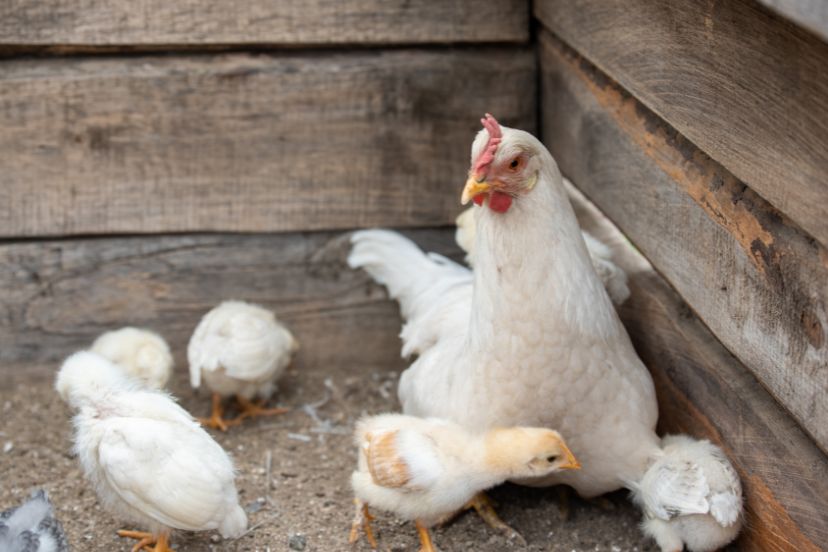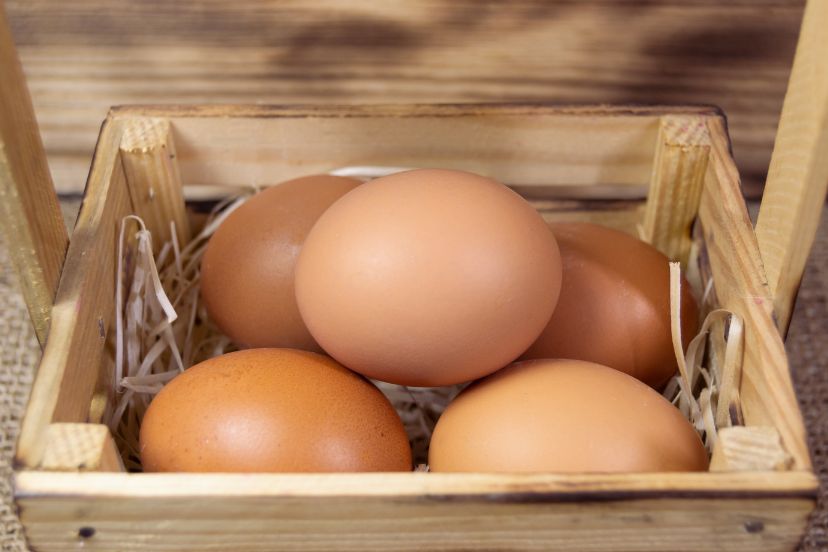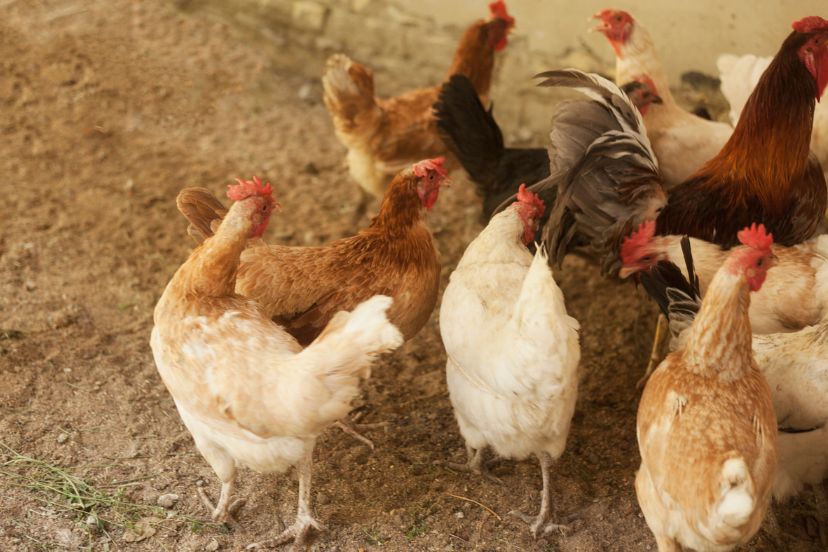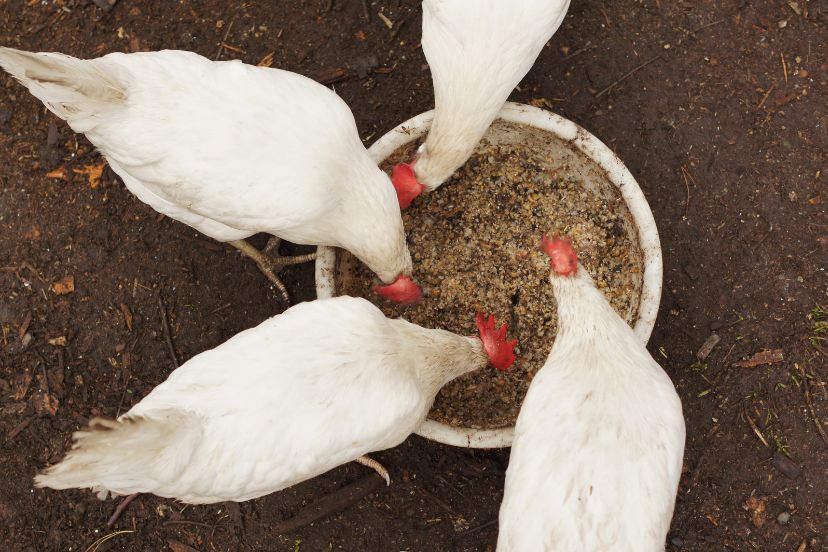Raising Amberlink Chickens: Best Practices and Benefits
Ever heard of Amberlink chickens and wondered what’s so special about them? Hailing from the diverse landscapes of Europe, Amberlink chickens have captured the hearts of poultry enthusiasts with their captivating appearance and impressive egg-laying prowess. The intriguing “amber” in their name is a nod to their distinctive feather hue, reminiscent of the warm glow of amber.
Origins and History
Amberlink chickens, with their European roots, have a rich history that intertwines with the continent’s longstanding tradition of poultry keeping. As the epicenter of numerous poultry breeds, Europe’s diverse climates and cultures have contributed to the development and popularity of various chicken types. Among them, the Amberlink has emerged as a standout.
The origins of the Amberlink chicken trace back to selective breeding practices aimed at achieving both aesthetic beauty and productivity. As poultry keepers prioritized certain traits, the Amberlink’s distinct appearance and prolific egg-laying capabilities became prominent.
The name “Amberlink” is no mere coincidence. It’s a poetic reflection of their feathering, drawing parallels with the semi-precious stone, amber. This radiant hue, sprinkled amidst their white plumage, offers a visual treat, reminiscent of sunlit amber stones. This distinctive look has played a considerable role in their popularity, making them a sought-after breed among poultry enthusiasts.
But it’s not just about the visual appeal. The Amberlink’s reputation as a robust layer has solidified its place in the hearts of many poultry keepers. Their consistent production of high-quality eggs, combined with their striking appearance, encapsulates the best of both worlds – form and function.
Through the years, as stories of their charm and efficiency spread, the Amberlink breed has not only been cherished in its native Europe but has also found homes in poultry farms and backyards around the world.
Physical Characteristics

Amberlink chickens are truly a sight to behold, exuding elegance and rustic charm simultaneously. Dominated by pristine white, their plumage is artistically speckled with shades of light brown, mimicking the warm glints of amber stones under sunlight. This distinctive coloration isn’t just beautiful but serves as their signature trait, making them easily recognizable even in a diverse flock.
In addition to their captivating feather pattern, Amberlinks boast a hearty and robust physique. This sturdiness is a testament to their resilience and adaptability, making them suitable for various environments. Accentuating their striking appearance are their vivid red combs and wattles, which contrast beautifully against their lighter feathers. These red appendages are not just ornamental; they play vital roles in regulating their body temperature and showcasing their health and vitality.
Egg Production

Amberlink chickens truly shine when it comes to their egg-laying prowess. Beyond their striking appearance lies a productivity that often surprises many poultry keepers. These birds are not just feathered ornaments; they’re hardworking layers that consistently produce a bounty of eggs. With Amberlinks in your coop, you can expect a regular stream of sizable, brown-shelled eggs that stand out both in quantity and quality.
The experience of collecting eggs from Amberlinks is indeed a unique pleasure. There’s a certain magic in greeting the morning with a basket, eagerly waiting to be filled with freshly laid, warm eggs. The rich brown hue of their eggs often stands in beautiful contrast to the straw of the nesting boxes, making the collection process almost picturesque. And yes, for many poultry enthusiasts (not just you!), there’s an undeniable satisfaction in cradling these tangible rewards of nurturing and care.
In the realm of backyard poultry keeping, where egg production is a significant metric of success, Amberlinks consistently prove their worth. They seamlessly blend ornamental beauty with functional benefits, ensuring that their keepers enjoy the best of both worlds.
Temperament and Behavior
Amberlink chickens have a demeanor that sets them apart from many other poultry breeds. Their calm and collected nature is often the first thing that poultry keepers notice. Unlike some breeds that can be flighty or aggressive, Amberlinks tend to exhibit a serene disposition. This tranquility, however, does not mean they lack personality. In fact, their friendly behavior often endears them to those who come into contact with them.
Their sociable nature makes them ideal companions for families, especially those with children. Kids often find in Amberlinks not just pets, but gentle friends, perfect for those tentative first interactions with poultry. Their approachability and lack of aggression mean that even the littlest of hands can feel safe around them. Moreover, their easily manageable nature is a boon for beginners in poultry keeping. With Amberlinks, the learning curve becomes less steep and much more enjoyable.
Adaptability to Environments

Amberlink chickens, with their robust nature, are truly champions of adaptability. Their evolutionary lineage and selective breeding have bestowed upon them a resilience that enables them to thrive across a spectrum of environments. While some breeds may be particularly suited to specific climatic conditions, Amberlinks display a versatility that’s commendable.
In colder regions, their dense plumage provides them with the necessary insulation to ward off the chill. Their body’s natural ability to regulate temperature, combined with their active behavior, ensures they remain active and healthy even when snow graces the ground. However, like all birds, it’s crucial to ensure they have a cozy shelter to retreat to during the most frigid nights.
Similarly, in warmer climates, their light-colored feathers reflect sunlight rather than absorbing it, keeping them relatively cooler. Their red combs and wattles, apart from being ornamental, play an essential role in thermoregulation, helping dissipate excess heat. Yet, in extreme heat, a shaded coop or resting area is vital to prevent overheating and ensure they remain hydrated.
Dietary Needs

When it comes to nourishing our feathered friends, understanding their dietary needs is paramount. Amberlink chickens, like all poultry breeds, thrive best when provided with a balanced and nutritious diet. Ensuring they receive all the necessary nutrients will not only maintain their health but will also reflect in their egg production and overall vitality.
Primarily, a diet consisting of layers’ pellets is essential. These pellets are specially formulated for laying hens, ensuring they get the required vitamins, minerals, and protein to produce high-quality eggs consistently. The high protein content aids in muscle development, feather growth, and general health.
Grains are a valuable addition, offering both nutrition and foraging fun for the birds. Whether it’s corn, barley, or oats, scattering them around encourages the chickens to scratch and peck, engaging in their natural behaviors and keeping them active.
And then come the treats! Occasional treats like fruits, vegetables, or even mealworms can be given, but moderation is key. These not only offer nutritional benefits but also strengthen the bond between the chickens and their keepers.
Lastly, fresh water is non-negotiable. Amberlinks, like all chickens, need a constant supply of clean water for hydration, especially during warmer months.
Housing and Shelter
The sanctuary of a well-designed coop can make all the difference in the world for Amberlink chickens. Just as we humans cherish the safety and comfort of our homes, these birds too require a space that caters to their innate needs while shielding them from external threats.
At the forefront of concerns is the protection against predators. Whether it’s cunning foxes, stealthy raccoons, or birds of prey circling overhead, a sturdy coop acts as the first line of defense. The coop should be robust with a mesh that’s fine enough to prevent any small invaders, and strong enough to deter larger ones. Also, burying the wire a foot or so underground can deter digging predators.
Weather fluctuations are another consideration. While Amberlinks are adaptable, it’s vital to provide them with a coop that can shield them from the extreme cold, heat, and rain. The roof should be waterproof, and the walls insulated enough to retain warmth during colder months while reflecting heat during the summer.
Ventilation is paramount. A stuffy coop can lead to respiratory problems and increase the risk of diseases. Strategically placed vents or windows can ensure a steady flow of fresh air without causing drafts. This keeps the coop’s environment fresh and healthy.
Inside the coop, the essentials are nesting boxes and perches. Nesting boxes provide a private space for hens to lay their eggs. They should be spacious, with soft bedding to ensure the eggs don’t crack. Perches, on the other hand, cater to a chicken’s instinctual need to roost off the ground. They provide a space for the birds to rest, sleep, and feel safe.
| Kickstarting Your Chicken Coop: |
Chicken Coop Accessories: Must-Haves for Your Flock
Cheap Chicken Coop Ideas for 2023
Common Health Issues
Ensuring the well-being of Amberlink chickens, or any poultry breed for that matter, goes beyond just providing food and shelter. Being vigilant about potential health issues and understanding their signs can be the difference between a thriving flock and one that’s constantly battling ailments.
External Parasites
Mites and lice top the list of nuisances for Amberlink chickens. These tiny parasites can quickly infest a bird, causing severe discomfort, feather loss, and even anemia if not addressed. Mites, in particular, can be ruthless, feeding on the blood of chickens during the night. Lice, on the other hand, feed on dead skin and feather debris. Regularly inspecting your chickens, especially under the wings and around the vent, can help in early detection.
Respiratory Issues
Amberlinks, like other poultry, can be susceptible to a range of respiratory diseases such as Infectious Bronchitis, Mycoplasma, and Avian Influenza. Signs to watch out for include sneezing, coughing, nasal discharge, and swollen eyes. Respiratory issues can spread like wildfire in a coop, so it’s essential to quarantine any bird showing symptoms and consult a veterinarian.
Internal Parasites
Worms can be a silent menace, affecting the bird’s digestive system and overall health. Regular deworming, as advised by a veterinarian, can help in keeping these internal parasites at bay.
Key to preventing these health issues is cleanliness. A clean coop with fresh bedding, regular removal of droppings, and adequate ventilation can significantly reduce the risk of infections and infestations. Moreover, periodic check-ups, both by the poultry keeper and by a professional vet, can ensure early detection and treatment. Knowledge, vigilance, and prompt action are the best tools in a poultry keeper’s arsenal to ensure their flock remains in the pink of health.
Lifespan and Growth
The journey of an Amberlink chicken from a tiny, fragile chick to a majestic, mature bird is a testament to nature’s wonders and the care provided by its keeper. Like many other living beings, the lifespan and growth of these birds are closely intertwined with their environment, diet, and overall care.
Typically, with optimal care, Amberlink chickens can expect to have a lifespan ranging from 5 to 7 years. However, certain factors can influence this:
Diet
Just as in humans, a balanced diet plays a pivotal role in determining the health and longevity of Amberlink chickens. A nutritious, varied diet ensures that they have all the energy and nutrients needed for growth and sustenance.
- Fundamentals: The backbone of an Amberlink chicken’s diet is typically a commercially available pellet or mash formulated for layers. These feeds are meticulously designed to provide all essential nutrients – proteins for muscle development and feather growth, calcium for strong eggshells, and essential vitamins and minerals to aid metabolic processes and ensure overall well-being.
- Variety is Key: While the formulated feed forms the core of their diet, variety is the spice of life. Grains such as corn, barley, and oats can be incorporated. Not only do they provide additional nutrients, but they also stimulate the chickens’ natural foraging behaviors, keeping them active and engaged.
- Greens and Vegetables: Fresh greens and vegetables can be a treat for Amberlinks. Lettuce, cabbage, spinach, and even carrot peels can be offered. They supplement the diet with additional vitamins and minerals and can improve the yolk color of the eggs.
- Protein Boost: Occasionally, especially during molting or when the chickens appear to be in need of a pick-me-up, protein-rich treats like mealworms or even scrambled eggs can be offered. They provide the necessary boost to feather growth and general health.
- Calcium and Grit: Oyster shells or crushed eggshells can be given as a separate supplement to ensure that laying hens get enough calcium. Grit, on the other hand, is vital for chickens as it aids in the digestion of grains in their gizzard.
- Hydration: Clean, fresh water should always be accessible. It plays a crucial role in digestion, temperature regulation, and metabolic processes.
Environment
The setting in which Amberlink chickens are raised plays a pivotal role in determining their overall health, productivity, and contentment. Just as we humans thrive in environments that cater to our basic and emotional needs, the same holds true for these feathered beauties. Here’s a deeper dive into the essential components that make up an ideal environment for Amberlink chickens:
- Safety First: Above all, a chicken’s environment must be secure from potential threats. This involves safeguarding against both aerial predators, like hawks, and ground-based threats like foxes, raccoons, or even wandering domestic pets. Protective measures could include a strong perimeter fence, overhead netting, and secure locking mechanisms for the coop.
- Cleanliness: A hygienic living space is essential to prevent the spread of diseases. This means regular cleaning of their living quarters, removal of droppings, and ensuring that their food and water sources are clean and uncontaminated. A clean environment drastically reduces the risk of parasitic infestations and bacterial or viral infections.
- Stimulation: Chickens are naturally curious and active creatures. Providing them with an environment that caters to their inquisitiveness can keep them both mentally and physically stimulated. This could include perches, dust baths, scratching areas, and even simple toys or mirrors. A stimulated chicken is generally a happier and healthier one.
- Shelter from Elements: Chickens need protection from the extremes of weather. This means shade during the hot days, shelter during rain or snow, and warmth during the cold months. Their coop should be well-insulated, ensuring they remain warm in winter and cool during the summer months.
- Space to Roam: While it might not always be feasible to allow free-ranging, it’s essential that chickens have enough space to move about, stretch their wings, and indulge in natural behaviors. Overcrowding can lead to stress, which in turn can lead to aggressive behaviors and increased susceptibility to illnesses.
- Social Interaction: Chickens are social creatures. They thrive in the company of their kind, establishing pecking orders and forming bonds. It’s crucial to ensure that they have the company of other chickens, but also to monitor for any signs of bullying or aggressive behavior, which could indicate a need to adjust their living conditions or numbers.
- Regular Health Checks: While not directly related to their physical environment, regular health checks ensure that any potential issues related to their surroundings (like injuries, parasites, or respiratory issues) are detected and addressed promptly.
Healthcare
The well-being of Amberlink chickens, or any poultry breed for that matter, is deeply rooted in the healthcare practices we integrate into their lives. Much like how our health routines can determine our quality of life, the same applies to these birds. Let’s delve deeper into the nuances of healthcare for Amberlink chickens:
- Routine Health Checks: At the heart of proactive healthcare is the regular health check. This involves visually inspecting each bird for signs of illness, injury, or distress. Look out for changes in behavior, posture, feather quality, and any visible signs of injury or disease. Regularly examining their eyes, beak, comb, and wattle for any anomalies can catch many issues before they become serious.
- Vaccinations: Just as humans need vaccinations to protect against various diseases, so do chickens. Depending on the region and prevalent diseases, Amberlink chickens might require vaccinations against ailments like Marek’s disease, Newcastle disease, and infectious bronchitis, among others.
- Parasite Prevention and Treatment: Chickens can be prone to internal and external parasites. Regularly checking for and treating worms, mites, and lice can go a long way in maintaining their overall health. Using diatomaceous earth in their dust baths, for instance, can be a natural way to ward off external parasites.
- Respiratory Health: Chickens are particularly susceptible to respiratory diseases. Ensuring a well-ventilated yet draft-free coop, along with maintaining cleanliness, can reduce the risk. If a bird shows signs of respiratory distress, isolation and prompt treatment are essential.
- Dietary Health: Monitoring their dietary intake is a form of healthcare too. Ensuring they get a balanced diet, free from moldy or spoiled feed, can prevent numerous dietary-related illnesses. Supplementing with necessary vitamins and minerals during times of stress or molting can bolster their health further.
- Isolation Quarters: Having a separate space for sick or injured birds is crucial. It not only provides the ailing bird with a quiet place to recover but also prevents the potential spread of illnesses to the rest of the flock.
- Educate Yourself: As keepers, continually updating our knowledge about chicken health can be immensely beneficial. This could involve attending workshops, reading books, or even joining poultry enthusiast groups online.
- Veterinary Care: While many minor issues can be addressed at home, having a relationship with a trusted avian or poultry veterinarian is indispensable. They can provide guidance on vaccinations, address serious health concerns, and offer advice on general poultry care.
Now, speaking of growth, the metamorphosis of an Amberlink from a chick to a fully-grown chicken is nothing short of mesmerizing. In the initial weeks, they undergo rapid growth, with their fluffy down being replaced by actual feathers. By the time they are 4-5 months old, they start exhibiting their distinctive Amberlink features, and around the age of 6 months, many start laying their first eggs.
The entire growth process, punctuated by various milestones, is a constant source of awe for many poultry enthusiasts. And isn’t there something profoundly satisfying and almost therapeutic about watching life unfold, witnessing each stage of development, and knowing that your care plays a significant role in that journey? The transformation of Amberlink chickens serves as a beautiful reminder of the cycles of life and the joys of caretaking.
Molting and Feathering
Molting is a natural, cyclical process that Amberlink chickens, like all poultry, undergo, typically once a year. This phase sees chickens shedding their old, worn-out feathers to make way for new, vibrant ones. It often starts at the head and neck, progresses down the back and towards the tail. While the sight of scattered feathers might be alarming to newcomers, it’s merely nature’s mechanism of giving chickens a fresh coat, much like how trees shed leaves in autumn.
During the molting period, it’s common for Amberlinks to experience a dip in egg production. The energy usually allocated for egg-laying is redirected to support the growth of new feathers. Additionally, as new pinfeathers emerge, they can be sensitive, making it crucial to handle chickens with care during this time. Alongside these changes, a molting chicken’s dietary needs evolve. The energy-intensive process necessitates an increased intake of nutrients, especially proteins, to support the swift growth of new feathers.
In essence, molting and feathering are indicators of growth and rejuvenation in a chicken’s life. For our Amberlink companions, this period signifies a time of renewal, concluding with a fresh, protective feather coat. As caregivers, understanding and assisting them through this transition ensures their continued comfort and well-being.
My Personal Experience with Amberlink Chickens
Embarking on the journey of raising Amberlink chickens has been one of the most rewarding experiences of my life. From the moment I introduced these radiant birds to my backyard, I knew I was in for a treat. Their distinct feather patterns, a dance of white with hints of amber, captivated me from the get-go. But their aesthetics were just the tip of the iceberg; their personalities shone even brighter.
Amberlinks quickly made their mark as the gentle giants of my flock. Their calm demeanor and curious nature made them approachable, even for my younger nieces and nephews who would occasionally visit. I often found myself spending countless hours simply watching them interact, forage, and play, finding solace in their simple yet fulfilling bird lives. Their social nature made them gel effortlessly with other breeds, acting almost like the glue that held the flock together. Many a time, I would chuckle watching them chase after treats, their quirky antics bringing sheer joy to my everyday routine.
And then, there were the eggs. A testament to their excellent laying capability, the Amberlinks graced me with a consistent supply of large, brown eggs. Not only were these eggs a visual delight with their rich, deep yolk, but their taste was unparalleled. Breakfasts were transformed into gourmet experiences, whether I opted for a simple boiled egg or an elaborate omelette. Sharing these eggs with friends and family often led to rave reviews, with many claiming they were the best they’d ever tasted. To think that these culinary treasures were the gift of my beloved Amberlinks made the experience even more special.
In conclusion, raising Amberlink chickens hasn’t just been about poultry care; it’s been a journey of discovery, joy, and culinary delight. They’ve taught me the value of patience, the beauty of nature, and the unmatched taste of farm-fresh eggs. To anyone contemplating adding these birds to their flock, I’d say, go for it! You’re in for a delightful experience.
FAQs
How many eggs do Amberlinks lay yearly? On average, they can lay around 250-280 eggs a year.
Are they suitable for meat? Primarily, people keep them for eggs, but they can also serve as a source of meat, especially when they decrease their egg-laying.
Can they fly? Not really. They might flap around but are not great fliers.
How do they fare with other breeds? They’re generally peaceful and can coexist well with other breeds.
Any special care during winters? A warm shelter and access to unfrozen water are crucial. Some extra treats wouldn’t hurt either!




